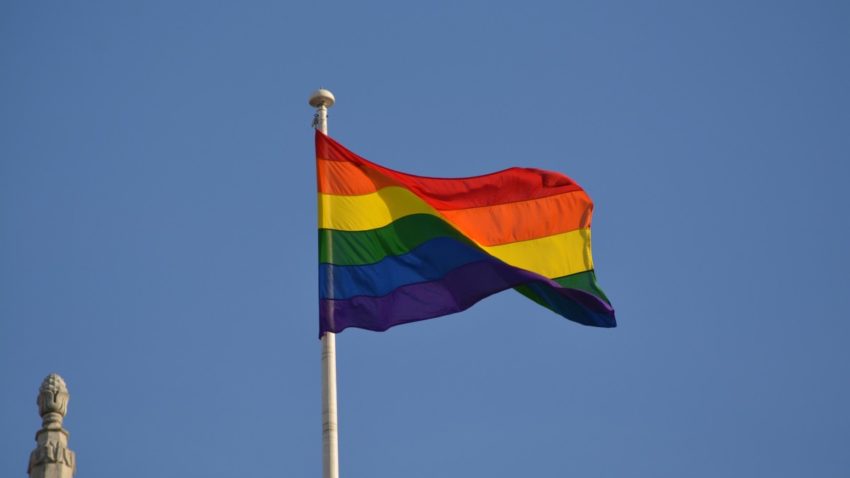by Martha Albertson Fineman

Image via Max Plieske
‘The Emergence of Queer Theory
During the 1980s and 1990s, the LGBT community faced a very particular constellation of pleasures and dangers around sexuality. For example, as AIDS and government neglect of the pandemic ravaged the gay community, sex and spaces of sexual culture became suspect and shadowed by public-health panics. Moreover, whereas some feminists considered turning to the state for protection, it was the state itself that was identified as a substantial source of danger for queer communities. This seemed an inevitable conclusion following the 1986 decision Bowers v. Hardwick, which upheld state prosecution of same-sex sodomy. Further, while formal legal barriers were falling for women, it was clear that for LGBT communities many barriers remained and more were being erected. For example, while discrimination on the basis of sex was becoming legally impermissible, discrimination on the basis of sexual orientation remained legal and affirmed: a lesbian could not be fired from work for being a woman, but she could be fired for being lesbian.
While there were a variety of responses to this situation, the one that came to predominate gay and lesbian politics tended to naturalize binary sexual identities, even as some theorists criticized that strategy. Further, building upon perceived successes of previous civil rights movements, gay and lesbian political leaders adopted a formal equality model that sought to equate the moral value and political status of homosexuality and heterosexuality. In practical terms, this meant trying to include gays and lesbians in existing antidiscrimination regimes, such as Title VII and Fourteenth Amendment jurisprudence, in order to gain access to existing institutions, such as marriage. There have been both successes and setbacks in this struggle: Bowers was overturned by the U.S. Supreme Court in Lawrence v. Texas (2003), but the policy of “don’t ask, don’t tell” continues in the military. The right of same-sex marriage has been established in some locales, but “Defense of Marriage” acts have become law in others.
It is in this context that queer theorists developed their critiques of both feminist and gay and lesbian theories. As Janet Halley points out in her chapter in this anthology, a postmodern anti- foundational approach has led to queer skepticism of the identity-based nature of feminist legal theory and politics. One queer criticism of feminism argues that because feminism works from existing identities and social structures its potential for radical change is limited. Eve Kosofsky Sedgwick also applied this criticism in pointing out the ―sexist tendencies‖ of gay and lesbian studies to ―reinscribe the invisibility of specifically lesbian experience/sex/writing/subjectivity‖ (Turner, 2000, p. 133). As is common among queer theorists, Sedgwick’s queer theory rejects the constrained binary of heterosexual/homosexual and understands sexuality as more fluid. There is an appreciation of a multiplicity of sexual possibilities, not a hierarchy in which the heterosexual presides over the homosexual. Many queer theorists blur the rigid line typically drawn between heterosexual and homosexual and seek to radically pluralize sexed and gendered practices (Bulldagger, 2006; Warner, 1999). In its strongest form, the notion that sexuality is fluid virtually erases the categories of heterosexual and homosexual. It is argued that this theoretical move enlarges the political reach of queer legal theories because it encompasses a far greater number of constituents. It is this claim that leads to the assertion that the promise of queer theory is an inclusiveness not found in feminism.
Some queer theories reject the primacy of the equality projects’ vision of inclusiveness, however. Laurie Kepros (1999/2000) summarized queer theory’s academic and political inclinations in this regard:
While Queer theory operates in the realm of social and political goals, it is not concerned directly with . . . equality. Instead, Queer theory focuses ―on the manner in which heterosexuality has, silently but saliently, maintained itself as a hidden yet powerfully privileged norm; and an implicit, if not explicit, questioning of the goals of formal equality that, on their face simply reify the very categories that have generated heterosexual privilege and Queer oppression. Within this ideological framework, Queer theory seeks to foster social change by keeping its own status as a theory undefined, its techniques postmodern, and its membership open. (p. 284)
A queer theorist might ask if Kepros hasn’t inappropriately collapsed a diverse intellectual movement into a singular approach. A feminist might ask if some sense of stable categories is necessary in order to accomplish theoretical and political ―progress.‖ One might follow up with a question as to whether the mere identification of sexual hierarchies can serve as the foundation of a political and legal battle against oppressions—sexual and otherwise.
There are many different claims made for queer theory. It is argued that being less fixated on a specific sex-identity is critical of identity-based thinking, and instead, positions sex and sexuality as central to the analytic. The chapters by Jack Jackson and Tucker Culbertson and Adam Romero in this volume, by contrast, reject the validity of attempting to define the substantive project of queer theory.
Reconciliation within Contradictions?
The contemporary debates over feminism and queer theory revolves around multiple interrelated issues that all extend from the emphasis given to gender on the one hand and sex and sexuality on the other. In some cases, feminism has been unfairly condemned as overly moralistic, while queer theory is mistakenly understood to be singularly about pleasure. But this dichotomy, like most, must inevitably fail.”